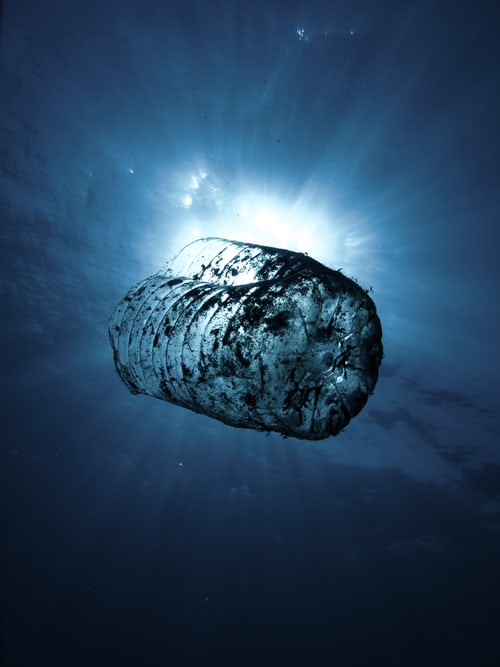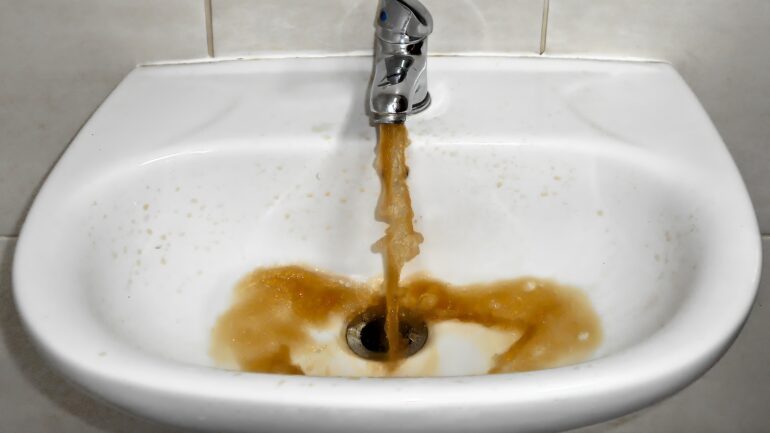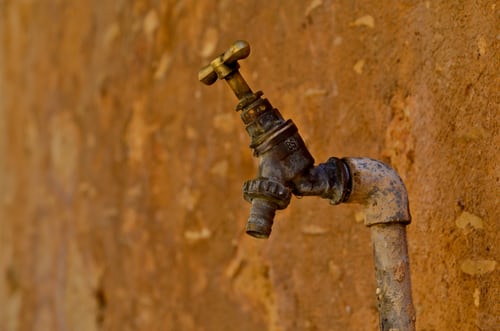End of Life Plastic Pollution
By Suraj Rajendran, Project Lead, Staff Writer & Researcher for Save The Water™ | April 6, 2018
Plastic. The ever-growing synthetic material is lightweight, water-resistant, durable, strong, economical, and resistant to corrosion as well as chemicals. You can find it anywhere you look, and you can’t find it if you don’t look. First, it doesn’t smell. Second, it’s versatile. Third, it’s cheap.7 Why wouldn’t you want to use this substance? It’s basically the stuff of gods.
Unfortunately, it’s these qualities that make plastic items antagonists of the environment, especially our dearly held waterways. This class of plastics, cleverly named “end-of-life plastics”, are becoming a larger part of the constituency of our water systems. In fact, dangerous forms of plastics are turning up in alarming numbers throughout the waters of the United States. This is raising concerns about a previously unknown form of pollution that scientists fear poses risks to people and wildlife by spreading toxic chemicals coupled with disease-causing bacteria.
Plastic: A Growing Concern that Can Literally Be Eaten
Currently, in the United States, plastic pollution is a growing concern for both individuals in affected areas and the governments that reign over them. Just look to bodies of water in the vicinity of Lake County. For example, studies have found that over half the plastic debris (around 5,300 metric tons) released from areas around Lake Michigan have ended up in the body of water. That’s equivalent to one hundred Olympic-sized pools full of plastic bottles. When using the same formula, researchers at Rochester University believe that over eight million tons of plastic will enter the oceans annually. Additionally, that rate will only increase as the years go by.1
Plastic debris also have other detrimental qualities. Floating plastics in oceans and other large bodies of water have been found to gather up persistent organic pollutants (contaminants that are hard to degrade) and transport them via ocean currents.2 Plastics tend to absorb and concentrate hydrophobic contaminants from the surrounding seawater.3 Sometimes, these compounds of pollutants become so concentrated that they form gyres. Plastics are not only deleterious to the appearance of our marine and aquatic ecosystems; they also have caustic effects on organisms that depend on the vitality of water.
As of now, the main route of concern is the consequence of ingestion, which could lead to physical and toxicological effects on biota.4 Laboratory studies have proven that organic pollutants, hinged onto plastics, can be transferred from plastics to organisms upon ingestion, leading to anatomical deficiencies in multiple facets.6 Current estimates suggest that over two-hundred-fifty species have been detrimentally impacted by plastic pollution.1 Not only that, but we, as humans, are putting ourselves in danger. More often than not, plastic pollution tends to contaminate our readily consumed food sources. The abundance of plastic pollution will only increase in the next few decades–even if we implement effective solutions—due to plastic’s ability to fragment.3
Plastic Pollution Hurts the Economy.
Plastic pollution is in no way ambivalent to the national economy either. The United States loses a hefty amount of revenue from the tourism and fishing industry only to be compounded by the loss of nearly eleven billion dollars on annual litter cleanup. Often, the brunt of the cost trickles down into lower politics. The direct costs of cleanup (including beaches and waterways cleanup, street sweeping, stormwater capture devices, storm drain cleaning and maintenance, manual cleanup, and public education) caused West Coast communities to cough up more 520 million dollars. Doing the math, that amounts to an unnecessary $14 per year for each resident spent cleaning up marine litter–marine litter that could have easily been prevented.8 With such brutal stabs on the American economy, it’s a surprise why the government hasn’t started to form a plan to combat plastic pollution.
There is a growing realization that the solution to plastic pollution in our oceans lies in using end-of-life plastics as a raw material for new production. Such principles are central to the philosophy of developing a more circular economy and rethinking our use of plastic materials. In line with this philosophy, it has considerable potential to bring much greater resource efficiency.
Solution Number 1: Ending Single-Use Disposable Plastic Items
To start off, America would benefit from a ban or fee on single-use plastic bags as neither the federal government nor state governments have implemented these yet. According to Matt Prindville, executive director of Upstream, “Single-use disposable plastic items (SUDS) are the largest contributors to marine plastic pollution”.5 Fortunately, county and municipal governments throughout the United States have begun to adopt bans or imposed fees on the use of single-use non-biodegradable plastic bags.8 The solution has implemented grassroots application which has been proven in many instances to be popular and decrease plastic bag consumption.
For example, look to the Washington D.C. Plastic Bag Fee. In the first month of implementation, bag use dropped from 22.5 million bags per month to three million bags. To date, the fee has generated more than six million dollars for the Anacostia River Fund.8
These actions have worked across the country in San Francisco as well. Before the ban, San Francisco produced an estimated 180 million single-use plastic bags per year. In the first year of implementation, the ban resulted in five million fewer plastic bags every year.8 To mirror the actions of these cities, Washington must do the same to decrease the presence of plastic bags in our water systems. The success rate of these local bans indicate that if a plastic ban was implemented in the state or maybe even national level, it could have beneficial effects.
Opponents of bans on single-use plastic bags, particularly the plastic industry, argue that efforts should be made toward recycling. This thinking is erroneous. Data shows that the recycling rates for plastic bags where recycling programs exist have remained low. Only six states have enacted recycling programs for plastic bags. And the EPA concluded that less than five percent of the 380 billion plastic bags used were.8 Moreover, it’s usually not economically feasible to recycle plastic bags as they have a relatively low market value. Certain plastics deserve to be dealt with in certain ways. As such, it’s necessary to look into how each plastic material is being recycled individually to decide what law we apply to it.
Solution Number 2: Deposit-Refund Systems Close the Loop
Another less-known method of decreasing plastic pollution is through deposit-refund systems. Deposit-refund systems create market incentives for proper disposal of potentially polluting products by combining a product charge and a subsidy for recycling or properly disposing of the product. Bottle deposit laws have significantly reduced litter and increased the percentage of containers recycled in several states.
For example, Oregon reported a 75 percent to 85 percent decrease in roadside litter only two years after enacting its deposit law.8 Bottle deposit laws prove extremely effective in increasing recycling and keeping our waters safe. Deposit-refund systems have also been shown to be more cost-effective than other methods of reducing waste disposal, such as recycling subsidies. Compared with curbside recycling programs, deposit-refund systems generate higher percentages of materials returned and less contamination of collected materials.8 In other words, these systems allow for plastic bottles to be reused in the most efficient manner possible.
Solution 3: Focusing on the Responsibility of the Plastic Producers
Countries around the world have also adopted the policy of Extended Producer Responsibility. Extended Producer Responsibility (EPR) is a producer-end mechanism to decrease waste, particularly plastic waste, by increasing recycling and decreasing dependency on raw materials. No U.S. state has passed legislation implementing comprehensive EPR for paper and packaging. By requiring industry to take back products at the end of a product’s life, industry can best design products to enhance their reusability. In this way, EPR is similar to product liability law, in that holding companies responsible for the injury created by their products incentivizes companies to improve the design of those products to minimize that injury.2 Companies which are forced to take back their products will be looking toward making it more efficient and beneficial to do so. As such they will attempt to waste as little as possible. At least thirty-three countries have implemented effective EPR policies.
For example, Germany’s Packaging Ordinance dramatically increased recycling and reduced plastics packaging volumes from 27 percent to 40 percent.6 There are already national policies around the world that have worked. The United States’ reluctance to do so is hampering its strength as a world leader in furthering a clean environment. Without regulation, waste generation in the United States will increase at considerable cost to local governments. Also, plastic marine litter will proliferate to the detriment of fishing and tourism-dependent communities, the shipping industry, and marine wildlife.8 In the long run, all of the mess humans have created will end up costing much more, if not exponentially more that right now.
Greater Awareness of the End of Life Plastic Problem is Key to All Solutions
A central idea prevails. For actions and laws to be successful, it’s important to promote greater awareness of the impacts of plastics and microplastics in the marine environment. We must take proper preparation actions. Otherwise, it will be more difficult to gain political agreement, public and private sector commitment, and public acceptance to pursue direct mitigation measures for litter reduction. Additionally, encouraging the introduction of the circular economy and the benefits of treating unwanted plastics as a resource will also be more difficult without such preparation.3
Action, to its fullest potential, won’t be possible unless we educate people around the United States as to what plastic pollution is doing to our water. This means common folk, as well as politicians. It will be more difficult to encourage particular key socio-economic sectors, and the public in general, to adapt their behaviors and contribute to the overall goal of reducing marine plastics.3 The crisis of plastic pollution will only be solved if we have the public support. It’s not possible to force people to do something and get it done efficiently.
Going along with the idea of encouraging awareness, it’s essential to use expertise from the social sciences, including psychological studies, to better understand perceptions of risk, social responsibilities, and the drivers of behaviors in the public and private sectors.3 Now, the United States has done minimal investigation into what implementing plastic ban laws would do to businesses or communities at a federal level.
Certainly, it’s important to do so before taking large steps. Part of these investigations would be taking proper account of regional, cultural, gender, economic, educational, and other demographic differences, in assessing perceptions and behaviors.2 The United States is a nation of people with diverse attributes. Consequently, federal laws should be comprehensive enough to account for the diversity that America has.
The plastics in our water won’t disappear any time soon, if any time at all. However, we can still preclude ourselves from an environmental disaster if we start acting now. Currently, we regulate plastic pollution in a rather lax manner. We should start making larger leaps toward securing safer water systems for our next generations.
References
- Abbey-Lambertz, Kate. December 29th, 2016. “The Great Lakes Have Become a Dumping Ground for Millions of Pounds of Plastic.” Huffington Post. www.huffingtonpost.com/entry/great-lakes-plastic_us_586502c0e4b0de3a08f73d20.
- Andrady, Anthony. “Microplastics in the Marine Environment.” Science Direct, www.sciencedirect.com/science/article/pii/S0025326X11003055.
- Kershaw, Peter. GESAMP, Joint Group of Experts on the Scientific Aspects of Marine Environmental Protection. Sources, Fate and Effects of Microplastics in the Marine Environment: A Global Assesment. Report no. 90, INTERNATIONAL MARITIME ORGANIZATION, ec.europa.eu/environment/marine/good-environmental-status/descriptor-10/pdf/GESAMP_microplastics%20full%20study.pdf.
- Hawthorne, Michael. February 1st, 2015. “A New Pollution Worry for Lake Michigan: Tiny Plastic Fibers.” Chicago Tribune [Chicago]. www.chicagotribune.com/news/ct-great-lakes-fiber-pollution-20150130-story.html.
- Prindville, Matt. UPSTREAM. April 22nd, 2015. “The Solution to Plastic Pollution?” upstreampolicy.org/the-solution-to-plastic-pollution/.
- Thompson, Richard. “Microplastics in the Marine Environment: Sources, Consequences and Solutions.” Research Gate.
- Tomasovic, Nick. March 28th, 2014. “Advantages of Plastic.” udemy blog, Udemy, Inc blog.udemy.com/advantages-of-plastic/. Accessed 27 Feb. 2017.
- UCLA School of Law. Federal Actions to Address Plastic Marine Pollution. Dec. 2013, law.ucla.edu/~/media/Files/UCLA/Law/Pages/Publications/CEN_EMM_PUB%20Surfrider%20UCLA%20-%20Plastics%20Solutions.ashx.





